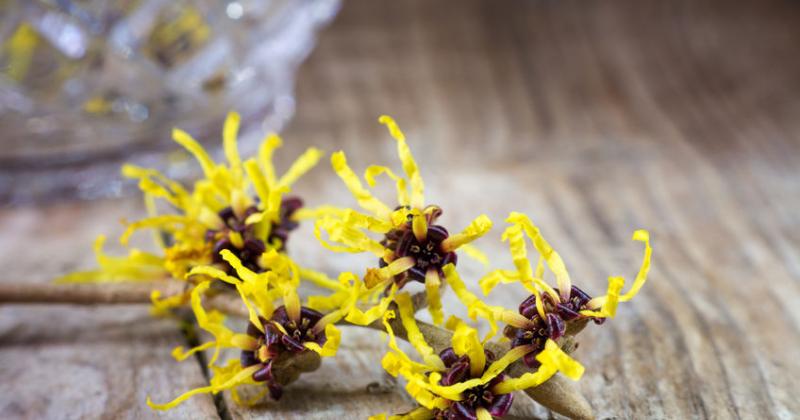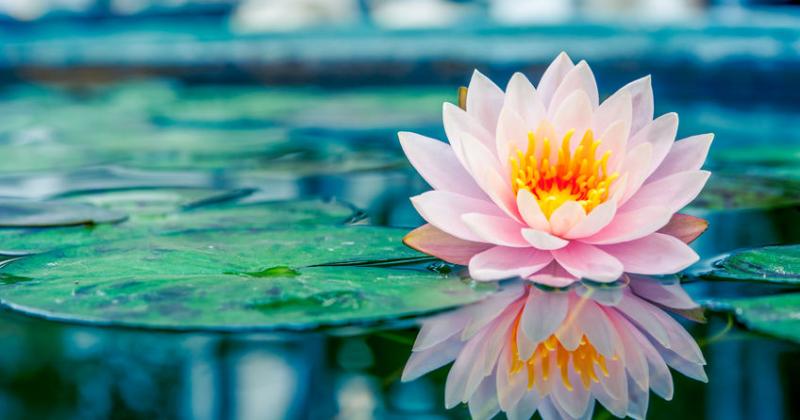WITCH HAZEL
 />
/>
Hamamelis virginiana has such popular names as "Witch Hazel" and "Witch Nut." The reason for this is its late flowering, unusual for other plants. The prevalence of the “Witch Nut” was much wider: in the Paleo-and Neogene periods of the Cenozoic era, Witch Hazel grew throughout Europe and North America. read more ›
CELANDINE
 />
/>
The plant is found in light and shady broadleaf forests among bushes, less often in light coniferous forests, in groves and coastal shrubs. Celandine grows predominantly on nitrogen-rich soils. The ants that use seeds for food and carry them over long distances contribute to the widespread use of Celandine. read more ›
MEADOWSWEET
 />
/>
Meadowsweet (Latin. Filipéndula Ulmaria) is a representative of the genus Filipéndula, of the subfamily Rosoideae, of the Rosaceae family. The generic name Filipendula is formed from "filum" (thread) and "pendulus" (hanging), because the root tubers seem to hang on filiform roots. The genus combines up to 10 species. read more ›
OREGANO
 />
/>
Since the Middle Ages, Oregano has occupied an important place among Mediterranean herbs. The name of this fragrant plant with small green leaves is translated as "decoration of the mountains" or "mountain joy". Oregano is often confused with marjoram. Although these herbs are both with a tart spicy smell and are similar in appearance, they have different taste and healing properties. read more ›
GOLDENSEAL IS BETTER THAN GOLD
.png) />
/>
Hydrostis Canadensis is the only member of the genus Hydrastis. The genus belongs to the Ranunculaceae family, which also includes about sixty genera.
Hydrastis is a perennial herb with a powerful, fleshy brown-yellow rhizome and thin horizontal roots up to 6 cm long. read more ›
OMNIPOTENT BLACK CUMIN
 />
/>
The homeland of Black Seed is the Mediterranean and South-West Asia. The plant is common in the countries of the Mediterranean, Europe, Asia, and North Africa. Black Cumin is cultivated in India and Egypt. India is the main producer and the largest exporter of this herb. read more ›
CLOSER LOOK AT MAYAPPLE OR AMERICAN MANDRAKE
 />
/>
The plant contains deoxypodophillotoxin podophyllotoxin, dehydropodophillotoxin, α-peltatin, β-peltatin, quercetin, berberine, flavonoids and lignans.
In addition, the composition of the Podophyllum Peltatum include a broad spectrum of macro elements: potassium, magnesium, iron and trace elements: manganese, copper, zinc, cobalt, molybdenum. read more ›
UTIs
 />
/>
Escherichia coli. is the most typical cause of UTI . The second bacterial cause of UTI is Staphylococcus saprophyticus. The most common treatment for UTI is antibiotics, so bacteria have become resistant to antibiotics, and infections are very common. read more ›
ACEROLA
 />
/>
Acerola is an evergreen tropical plant. It`s a large, dense bush or low tree, from 4 to 6 metres height and grows about the same in width. Numerous tree bodies are thin and look like reeds. The fruit is round or oval, looks like a cherry, but closer to citrus due to its properties. read more ›
ULTIMATE GUIDE TO MACA ROOT
 />
/>
Maca Root is a biennial herbaceous plant of the genus Lepidium. It has an edible pear-shaped root. It is usually of yellow, purple or black color. The root reaches weight up to 1 kg. Maca Root has thick pinnately-divided leaves and little flowers, gathered in racemous flower head. The seeds of the plant are tiny, ovate and are of red-gray color. read more ›
DANDELION WORKS ITS MAGIC
 />
/>
This sunny flower was brought to America as a food crop. Now it is assimilated throughout Southern Africa, North and South America, Australia, New Zealand, India. It can be found in all 50 states and most Canadian provinces. read more ›
KEEP CALM AND EAT WILD STRAWBERRIES
 />
/>
The leaves of the plant contain B vitamins, ascorbic acid, carotenoids, organic acids (citric, quinic, malic), sugars, traces of essential oils, flavonoids in an amount up to 2% (mostly rutin), tannins (up to 9%), salt iron, manganese, cobalt, phosphorus. Fruits contain, in addition, folic acid, pectic substances. read more ›
NO MUD, NO LOTUS
 />
/>
A large number of active substances stipulates useful properties of this flower. The leaves of the plant contain flavonoids, leucoanthocyanidins and alkaloids; rhizomes are rich in tannins, starch, resin, and rubber and vitamin C are present in all parts of the lotus. read more ›
GINKGO BILOBA
 />
/>
Ginkgo trees usually reach a height of 20-35 meters. Ginkgo biloba has a superbly developed root system. The branches are naked and long, with bundles of leaves on top. Young trees are elongated and slender, with a wide-pyramidal crown. Over the years, the ginkgo crown grows, and its apex dulls. read more ›
LYCHEE
 />
/>
Lychee is an evergreen tree 10-30 m high (usually up to 15 m) with spreading crown. Leaves are compound, paripinnate, consist of four to eight leaflets. The leaf blade is smooth-margin, glistening on top, dark green, and below is grayish green. Flowers are without petals, with a yellowish or greenish calyx, are collected in lush umbellate inflorescences up to 70 cm long. Fruits are oval, 2.5-4 cm long. Their rind is red, covered with numerous acuminate tips. Light jelly pulp easily separates from the peel, has a sweet taste with a slight wine tinge. read more ›
CHINESE YAM
 />
/>
Dioscorea Opposita is an ancient cultural plant of China and Japan. The roots are 60-100 cm long, deep in the ground. The stem is more or less angular, sometimes convolute, up to 9 m high, usually with a purple tone, with globular tubers in the axils of the leaves. Leaves are opposite, 4-7 cm long, ovate or triangular. Flowers are white, in solitary or paired axillary racemes, with a scent of cinnamon. read more ›
LARGEHEAD ATRACTYLODES
 />
/>
Atractylodes Macrocephala is a perennial herbaceous plant 30-50 cm high with a thickened fleshy tuberous rhizome. Leaves are alternate, petiolate, dissected into 3 lanceolate segments, upper ones are lanceolate, entire; at the edge are serrate-dentate. Inflorescences are single baskets. Flowers are small, tubular, white in the lower part and light purple in the upper part. Fruit is seed, almost spherical. read more ›
STEPHANIA TETRANDRA
 />
/>
Stephania Tetrandra is an herbaceous vine in Menispermaceae family. This plant is 1-3 m high with fleshy, cylindrical root. The foliage is dense. Leaves are narrow-thyroid, broad-triangular or triangular, pubescent (on both sides or only from the upper), acuminate. Flowers are dioecious, five-petalled, collected in the head inflorescence. There are four sepals (sometimes five), five petals, four stamens in male flowers. Fruit is a drupe; ripe fruit is of red color, almost spherical in shape. read more ›
PINE POLLEN
 />
/>
Pinus Sylvestris is an evergreen coniferous tree up to 40 m high. The bark is red-brown, nearer to the apex is brown-yellow. Needles are 5-7 cm long. read more ›
SEA BUCKTHORN IS THE GOLDEN BERRY
 />
/>
Multiple deciduous shrub, rarely a tree, whose height usually reaches 1-3 m, and sometimes 3-6 m, up to 15 m. Young shoots are silvery, pubescent; perennial - covered with dark brown, almost black bark. Short shoots are with numerous long spines. Shoots of different ages create a rounded, pyramidal or spreading crown. read more ›
